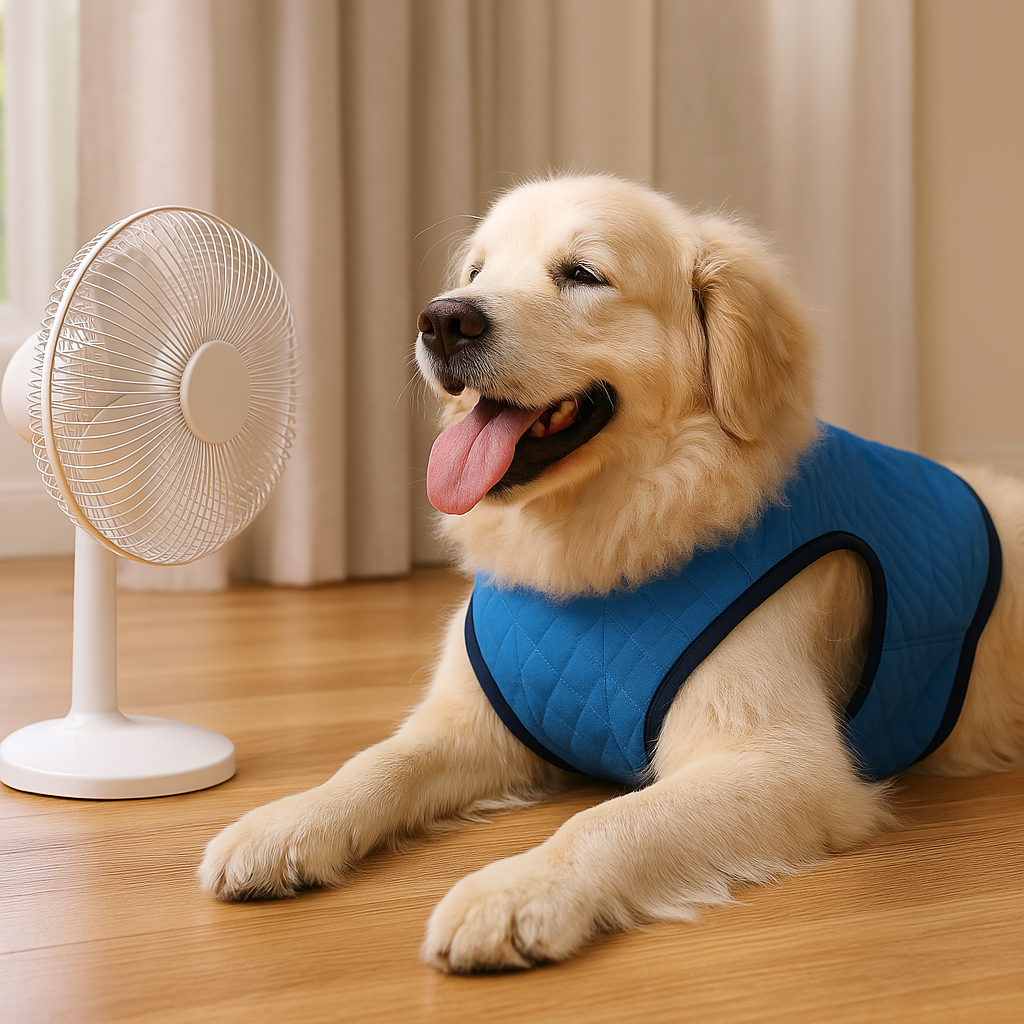
As pet owners, we all want our furry companions to live long, healthy lives. However, the sad reality is that every dog breed has a different life expectancy. Understanding the factors that affect a dog’s lifespan can help us provide better care for our pets and improve their quality of life.
In this article, we will delve into the science of aging in dogs and explore which breeds have the longest life expectancies. We will also examine the various factors that can impact a dog’s lifespan, such as genetics, diet, exercise, and medical care. By the end of this article, you will have a better understanding of how to increase your dog’s life expectancy and provide them with the best possible care as they age.
The Science of Aging in Dogs
Dogs are a part of many households around the world today. These furry friends have become known for their loyalty, unconditional love, and companionship. However, as much as we wish our pups could live forever, the sad reality is that all dogs age and eventually pass on. Understanding the science of aging in dogs can help pet owners prepare for this inevitable process and make informed decisions about how to care for their furry companion.
Genetics and Aging
Genetics play an essential role in determining how long your dog will live. Scientists have found that specific breeds tend to live longer than others. For instance, small breeds like Chihuahuas and Yorkshire Terriers generally have longer lifespans compared to larger breeds like Great Danes or Saint Bernards.
It’s not just about size either; genetics can influence other factors that impact lifespan such as health issues like joint problems or cancer risk. Studies show that certain genes associated with disease resistance or immune system function may also play a role in canine aging.
The Role of Free Radicals
Free radicals are unstable molecules produced naturally by your dog’s body during metabolism processes like breathing or digestion. These molecules can cause oxidative stress when they accumulate beyond what your pet’s body can tolerate – essentially damaging cells and tissues throughout the body over time.
This damage is thought to be one of the primary causes of aging in dogs (and humans). It leads to wrinkles, age spots, joint problems, decreased cognitive function, cancerous growths and other signs of aging.
Environmental Factors That Accelerate Aging
In addition to genetics and free radicals, environmental factors also play a role in determining how long your dog will live. An unhealthy diet high in processed foods, lack of exercise, exposure to toxins such as cigarette smoke and air pollution, and stress can all contribute to premature aging in dogs.
However, pet owners should not feel discouraged. By understanding the science behind canine aging and taking proactive measures to reduce environmental factors that accelerate it, you can increase the odds of your furry friend living a long and happy life.
Dog Breeds with Longest Life Expectancy
As a dog owner, it is important to choose a breed that will be with you for as long as possible. Here are the top dog breeds known for their longevity:
 1. Chihuahua
1. Chihuahua
Despite their small size, Chihuahuas can live up to 20 years. They are known for their strong heart and healthy immune system, which allows them to live longer than most other breeds. These dogs require minimal exercise and can make great indoor pets for those looking for a low-maintenance companion.
If you’re considering getting a Chihuahua, it’s important to note that they are prone to dental problems and obesity. Proper care, including regular dental checkups and a healthy diet, can increase their life expectancy.
 2. Australian Cattle Dog
2. Australian Cattle Dog
The Australian Cattle Dog is a medium-sized breed that can live up to 16 years. This breed is known for its high energy level and athletic ability, making them great companions for active owners who enjoy hiking or running.
Australian Cattle Dogs have few health issues, but they do require regular exercise to maintain good physical health. With proper care and attention, these dogs can live long and fulfilling lives.
 3. Jack Russell Terrier
3. Jack Russell Terrier
The Jack Russell Terrier is another small breed known for its longevity, with an average lifespan of 13-16 years. These energetic dogs are highly intelligent and require plenty of mental stimulation in addition to physical exercise.
Jack Russell Terriers are prone to certain health issues such as deafness and eye problems but they typically have few genetic disorders overall compared to other breeds due in part because they were developed from several different types of terriers. Regular vet check-ups and a healthy diet can help reduce the risk of health problems and increase their lifespan.
Remember, while these breeds are known for their long lifespans, every dog is unique and their lifespan will ultimately depend on a variety of factors including genetics, care, and environment. Nevertheless, choosing a breed that has a reputation for longevity is likely to result in longer companionship with your dog.
 Factors that Affect Dog Life Expectancy
Factors that Affect Dog Life Expectancy
Life expectancy in dogs is largely influenced by various factors, some of which are beyond human control. These factors have a significant impact on the health and overall well-being of a dog throughout its lifetime. Understanding these factors can help dog owners make informed decisions about their pets’ health and care.
Genetics
The genetic makeup of a dog plays a crucial role in determining its life expectancy. Certain breeds are predisposed to certain medical conditions that can shorten their lifespan, such as hip dysplasia or heart disease. Additionally, even within a breed, there can be variations in genetics that affect lifespan. It is important for potential dog owners to research the breed they are interested in and ask breeders about any health issues that may be common.
Diet and Nutrition
Diet and nutrition are essential elements in maintaining your pet’s health and extending its life expectancy. Feeding your dog with high-quality food, providing adequate fresh water, and avoiding overfeeding can prevent obesity-related illnesses such as diabetes or arthritis. Foods with high nutritional value should be given at appropriate intervals according to age or size requirements.
Environmental Factors
The environment where your dog lives also affects its life expectancy. Dogs who have access to clean air, sunlight exposure, sufficient exercise opportunities experience better physical development than those who do not receive these benefits. Also indoor dogs have lesser exposure to environmental toxins compared to outdoor dogs because they spend most of their time indoors.
Awareness of these factors allows us to take better care of our furry friends throughout their lives so they may thrive for as long as possible.
How to Increase the Life Expectancy of Your Dog
1. Proper Nutrition
Nutrition has a significant impact on the health and life expectancy of our furry friends. Feeding your dog a well-balanced diet that is rich in nutrients, vitamins and minerals can help keep them healthy for longer. Make sure to provide your dog with high-quality food that is appropriate for their age, breed, and size. Avoid table scraps or feeding them human food as they often contain fat, salt, sugar or other ingredients which could cause health issues for your pet.
In addition to proper nutrition, it’s important to monitor your dog’s weight and body condition regularly. Obesity is a common problem among dogs and can lead to various health problems including heart disease, diabetes and joint issues.
Consulting with a veterinarian on the right diet and feeding schedule for your dog could also help increase their life expectancy.
2. Exercise
Daily exercise is essential in keeping dogs healthy both physically and mentally. Regular physical activity helps maintain healthy body weight, strengthens muscles and joints while reducing stress levels.
The amount of exercise required varies depending on age, breed and size of the dog. Younger dogs may require more vigorous activities such as running or playing fetch while senior dogs may benefit from gentle walks or swimming sessions.
Schedule regular exercise sessions with your pets every day but always remember not to overexercise or push them beyond their limits which could cause injuries or exhaustion.
3. Regular Veterinary Care
Regular veterinary check-ups are an important part of maintaining optimum health for your furry friend. It’s recommended that dogs should visit their vet at least once a year for routine check-ups which include vaccinations updates, dental care as well as screening tests for common diseases such as heartworm, tick and flea infestation.
By detecting health problems at an early stage, you could help prolong the lifespan of your dog. Always remember to follow the veterinarian’s advice on preventive care measures that are specific to your pet’s needs.
With proper nutrition, regular exercise and veterinary care, you could help increase the lifespan of your furry friend. Remember to provide them with love and attention too!
Managing Senior Dogs
Providing Proper Nutrition
As dogs age, their nutritional requirements change, and it is crucial to provide them with a well-balanced diet that accounts for their changing needs. Senior dogs require fewer calories as they are less active than younger dogs. Therefore, you should choose a high-quality food that is low in calories and contains easily digestible protein. You can also consider incorporating supplements such as glucosamine to support joint health.
In addition to a healthy diet, freshwater must always be available to senior dogs. Because older dogs have an increased risk of dehydration, it is essential to monitor their water intake and ensure that they are drinking enough water throughout the day.
Proper nutrition plays a significant role in managing senior dogs’ health and extending their lifespan. Therefore, feeding your aging dog with appropriate meals will help them maintain good health and live longer.
Maintaining Physical Activity
Aging affects the physical abilities of dogs; however, it does not mean that they should stop exercising altogether. Exercise remains essential for keeping senior dogs healthy and managing their weight. However, you should adjust the intensity of the exercise routine based on your dog’s abilities.
You can engage your senior dog in low-impact activities such as short walks or swimming sessions that do not put much strain on joints or muscles. Alternatively, interactive toys can help stimulate mental activity while still providing light exercise.
Maintaining physical activity levels is essential for senior dog care since it helps them manage different conditions such as arthritis while improving mental states by interacting with caregivers.
Veterinary Care Management
Senior dogs require more frequent veterinary checkups than puppies or young adult dogs due to an increased risk of developing chronic diseases common among older animals. Regular physical exams, blood tests, and screenings can detect age-related health issues such as dental problems, tumors, or organ diseases.
Early detection of these conditions is critical in treating them before they become more severe. Senior dogs may also require additional vaccinations to protect them from specific diseases. Therefore, it’s essential to work with your veterinarian to create a comprehensive care plan that includes regular checkups and preventive care.
Veterinary care management plays a vital role in managing senior dogs’ health needs and improving their longevity since it allows for early detection of any medical issues that can be treated appropriately.
 Caring for Aging Dogs
Caring for Aging Dogs
Regular Veterinary Care
As dogs age, they become increasingly susceptible to health problems. Regular visits to the veterinarian can help you catch and treat health issues before they become serious. This is especially important for senior dogs, as catching and treating a health problem early on can improve their quality of life and increase their life expectancy. During these checkups, your vet will examine your dog’s teeth, eyes, ears, muscles, bones and general bodily functions to assess their overall health.
If you see any signs that your dog may be ill or in pain between checkups (such as excessive panting or difficulty walking), don’t hesitate to make an appointment with your vet right away. Early intervention is key when it comes to preventing health problems from worsening in aging dogs.
Dietary Changes
Your senior dog’s nutritional needs will change over time. As they age, their metabolism may slow down and their digestive system may require different types of food than when they were younger. Senior dog foods are formulated to meet the specific nutritional needs of older dogs and often contain ingredients like glucosamine and chondroitin that promote healthy joints. You should consult with your veterinarian about the best diet for your aging dog.
In addition to making dietary changes, it’s important that you monitor your senior dog’s weight closely. Obesity can exacerbate existing joint problems or contribute to the development of new ones in older dogs which could shorten their lives.
Exercise Modifications
While exercise is still essential for an aging dog’s physical and mental well-being, it’s important not to overdo it as they get older because too much exercise might cause injuries or put extra stress on arthritic joints resulting in pain. Senior dogs need lower-impact exercises that promote flexibility and build muscle without causing pain. Swimming, gentle walks, and modified games like fetch or tug-of-war are just some of the great ways to keep aging dogs active.
It’s also important to adjust exercise routines to meet your dog’s changing capabilities as they age. Some senior dogs may tire more easily than they used to, so it’s recommended that you shorten the duration of exercise sessions and take breaks as needed.
Improving Quality of Life for Aging Dogs
 Physical Exercise and Mental Stimulation
Physical Exercise and Mental Stimulation
As dogs age, they may become less active and more prone to gaining weight. However, regular exercise can help alleviate joint pain and stiffness and keep your dog’s muscles strong. Low-impact exercises such as swimming or walking on soft surfaces are best for seniors. Additionally, providing mental stimulation such as puzzle toys or hiding treats around the house can help keep your aging dog’s mind sharp.
It is important to note that exercise should be tailored to your dog’s individual needs and health status. Consult with a veterinarian about an appropriate exercise plan for your senior dog.
Comfortable Living Environment
As dogs age, they may develop arthritis or other conditions that make it difficult for them to move around comfortably. Providing a comfortable living environment is essential in improving their quality of life. Consider investing in an orthopedic bed or ramp to help them get on and off the bed or couch more easily. Raising food and water bowls to chest level can also reduce strain on their necks while eating.
Make sure your home is well-lit so that your aging dog can see better, especially if they have impaired vision due to cataracts or other eye conditions. Keep their living area clean and free of obstacles that could cause falls.
Nutritious Diet and Regular Veterinary Check-Ups
Feeding your senior dog a nutritious diet is essential in maintaining their overall health as they age. Consult with a veterinarian about the appropriate diet for your aging dog’s specific needs, including any necessary supplements.
Regular check-ups with a veterinarian are crucial in catching any potential health problems early on before they progress into something more serious. Senior dogs should have more frequent check-ups, including blood work and X-rays.
Improving the quality of life for aging dogs involves a multifaceted approach. Providing physical exercise and mental stimulation, creating a comfortable living environment, and maintaining a nutritious diet and regular veterinary check-ups are all crucial in ensuring your senior dog lives their best life in their golden years.
Recognizing Signs of Aging in Dogs
As your dog ages, it is important to recognize the signs of aging. This will help you provide the best care for your furry friend and allow you to detect any potential health problems early. Some common signs of aging in dogs include:
Changes in Behavior
One of the most noticeable signs of aging in dogs is changes in behavior. Your dog may become less active, experience a decrease in appetite, or start sleeping more than usual. They may also become more anxious or irritable as they age. It’s important to pay attention to these changes as they may indicate an underlying health problem.
Physical Changes
Just like humans, dogs experience physical changes as they age. You may notice that your dog’s fur is thinning or turning gray around their face and muzzle. They may also start to develop lumps or bumps under their skin, which should be checked by a veterinarian if they appear suddenly or grow rapidly.
Health Issues
As dogs age, they are more prone to certain health issues such as arthritis, dental problems, and vision loss. It’s important to monitor your dog’s overall health and take them for regular check-ups with their veterinarian. Catching these issues early can help prevent them from becoming more serious. Remember that every dog ages differently and at their own pace. By staying attentive and vigilant about changes in behavior, physical appearance, and overall health issues you can ensure that your furry companion continues to live a happy and comfortable life throughout their golden years!
Conclusion
In conclusion, understanding the life expectancy of different dog breeds is crucial for pet owners to make informed decisions about their dogs’ health and wellbeing. By taking steps to manage senior dogs, caring for aging dogs, improving their quality of life, and recognizing signs of aging early on, pet owners can help increase the lifespan of their furry friends. With proper care and attention, our beloved companions can live long and happy lives by our side. Remember that every dog is unique and has different needs, but with love and care, we can give them the best life possible.


